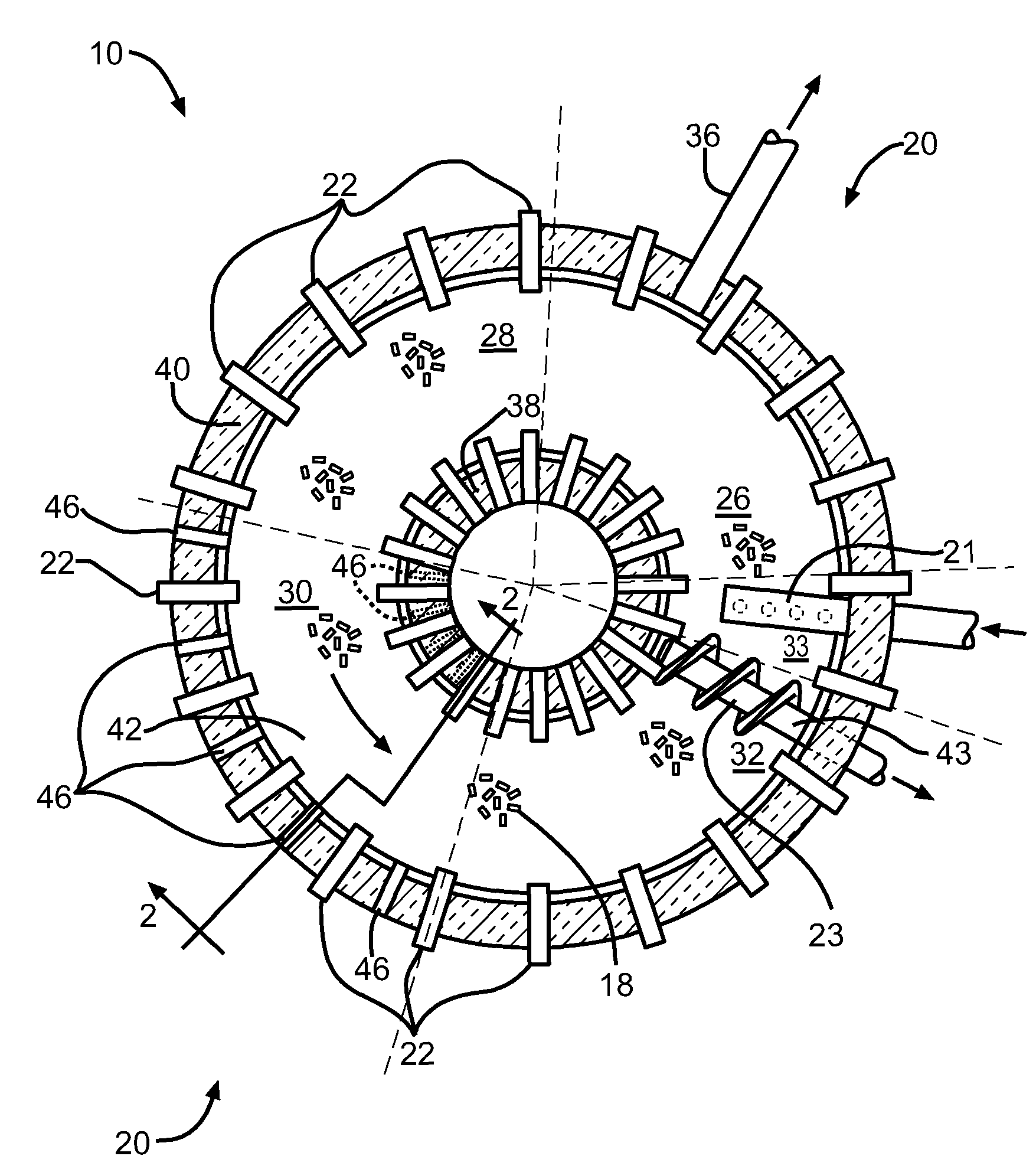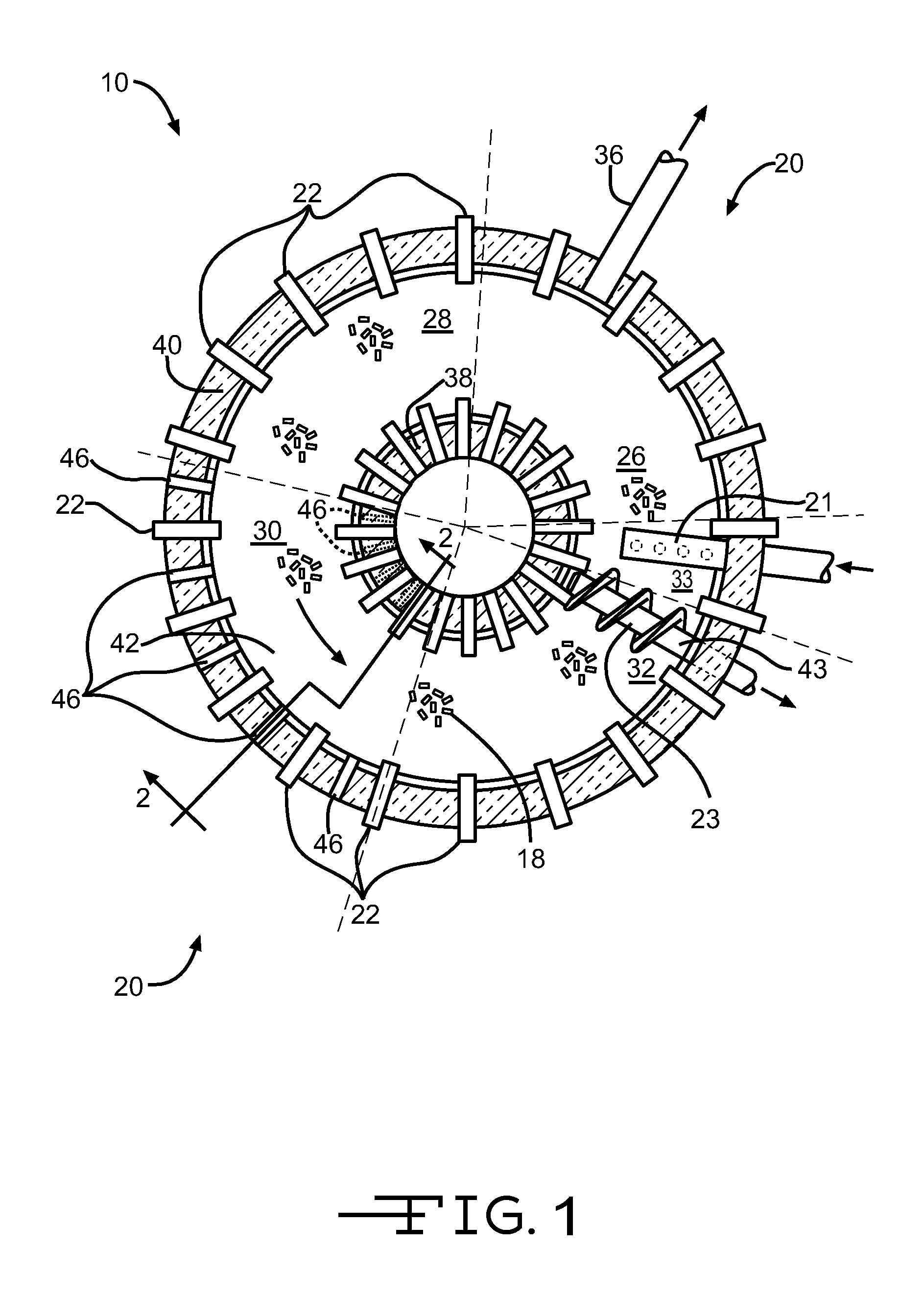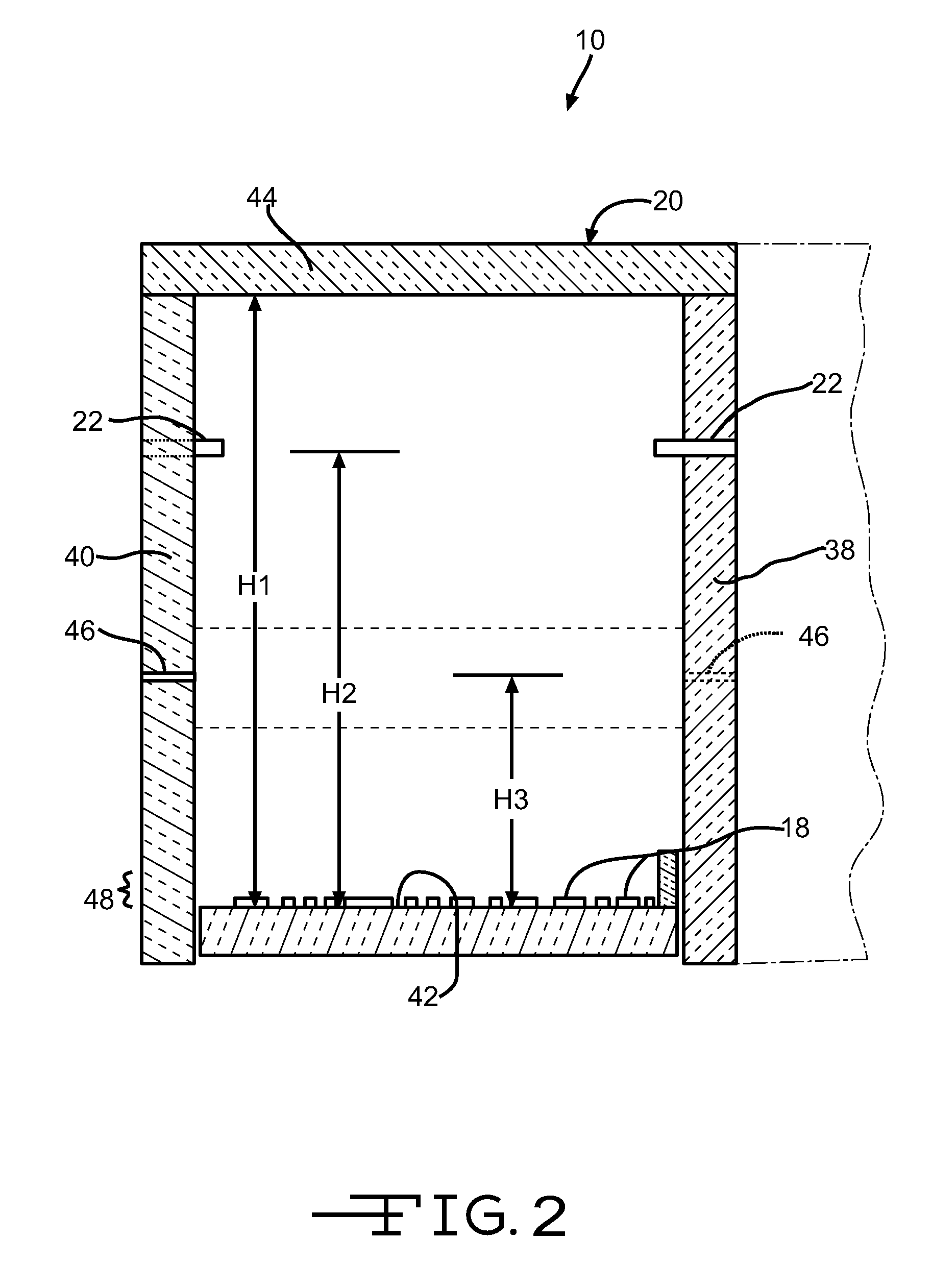Rotary hearth furnace for treating metal oxide materials
a technology of metal oxide materials and heating apparatus, which is applied in the direction of furnaces, lighting and heating apparatus, blast furnace details, etc., can solve the problems that the attempt to reclaim iron oxides directly for reuse has not proved practical, and achieves the effects of minimizing turbulence, and minimizing entrainment of particulate matter
- Summary
- Abstract
- Description
- Claims
- Application Information
AI Technical Summary
Benefits of technology
Problems solved by technology
Method used
Image
Examples
Embodiment Construction
[0011]Referring now to the drawings, wherein like reference characters represent like elements, there is shown in FIG. 1 a rotary hearth furnace 10 for treating metal oxide materials such as ores and fines. It should be noted that for purposes of clarity certain details of construction of the apparatus for practicing the process of treating metal oxide materials are not provided in view of such details being conventional and well within the skill of the art once the apparatus is disclosed and explained. For example, blowers, piping and conveyors and the like as required for the handling of gaseous and particulate solid materials may be any such known commercially available components with the exception that such components may be modified as necessary by one skilled in the art to be employed in the overall system as discussed herein.
[0012]In this specification the process and apparatus are primarily described in connection with treating metal oxide materials to recover elemental iro...
PUM
| Property | Measurement | Unit |
|---|---|---|
| distance | aaaaa | aaaaa |
| distance | aaaaa | aaaaa |
| height | aaaaa | aaaaa |
Abstract
Description
Claims
Application Information
 Login to View More
Login to View More - R&D
- Intellectual Property
- Life Sciences
- Materials
- Tech Scout
- Unparalleled Data Quality
- Higher Quality Content
- 60% Fewer Hallucinations
Browse by: Latest US Patents, China's latest patents, Technical Efficacy Thesaurus, Application Domain, Technology Topic, Popular Technical Reports.
© 2025 PatSnap. All rights reserved.Legal|Privacy policy|Modern Slavery Act Transparency Statement|Sitemap|About US| Contact US: help@patsnap.com



